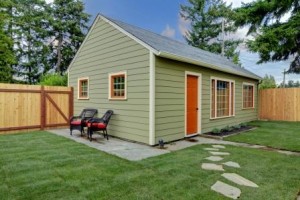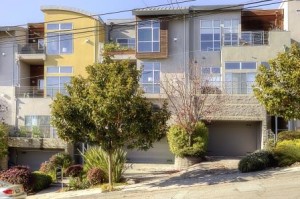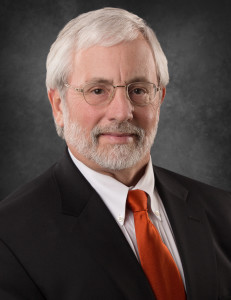
Guest post by Paul Hilgers (Essential 1987). Paul is the Chief Executive Officer of the Austin Board of REALTORS® .
The phrase “there’s no place like home” is especially true in Austin, Texas. With a rapidly growing economy, strong job market and our overall quality of life, we continue to attract more residents to this great city. Yet with this high market demand and record-low housing supply, Austin is now one of the most expensive housing markets in Texas. If we don’t make some significant changes to address this reality, many more of our residents will not be able afford to live within the city limits.
It’s clear that Austin needs more housing stock – at least 100,000 new housing units before 2025 as reported at the Leadership Austin Engage Breakfast earlier this month – but the solution to Austin’s housing affordability challenges is more than just building new housing stock, it’s about redefining what “home” means for Austin.
 Today, “home” for most Austin residents is a single-family home, an apartment in a large multi-family complex, or a condominium in a tall downtown tower. However, single-family homes can no longer be developed within Austin’s city limits in an affordable price range for most homebuyers. High-rise condominiums and large-scale apartment complexes are not practical density solutions for many of Austin’s neighborhoods.
Today, “home” for most Austin residents is a single-family home, an apartment in a large multi-family complex, or a condominium in a tall downtown tower. However, single-family homes can no longer be developed within Austin’s city limits in an affordable price range for most homebuyers. High-rise condominiums and large-scale apartment complexes are not practical density solutions for many of Austin’s neighborhoods.
If we are ever to have an affordable Austin again, then we must create conditions that allow for abundant housing options for all of our residents, both those living here today and those who strive to make Austin their home tomorrow. Abundant housing means a variety of options, such as lofts in small apartment buildings, more duplexes and triplexes, and accessory dwelling units in traditional single-family neighborhoods. These medium-scale housing options are not only affordable to more residents, they allow for greater density and infill throughout Austin without disrupting the unique sense of place of its neighborhoods. Equally important, this type of housing stock allows residents to live close to where they work and go to school, reducing commute times and congestion on Austin’s roads, perhaps the biggest threat to our overall quality of life.
 Medium-density housing options are commonplace in many Austin-sized cities. More important, these housing options align well with Imagine Austin’s vision for a compact and connected city. We must have the courage to both address the concerns of neighborhoods and achieve the goals of Imagine Austin through a balanced approach to our land development rules. This comprehensive plan for our future recognizes that Austin’s growing populations of single young professionals, families without children and retired senior adults often prefer a smaller home with less upkeep and greater access to services, amenities and entertainment. Our future economic viability depends on increasing the affordability of all of our housing options.
Medium-density housing options are commonplace in many Austin-sized cities. More important, these housing options align well with Imagine Austin’s vision for a compact and connected city. We must have the courage to both address the concerns of neighborhoods and achieve the goals of Imagine Austin through a balanced approach to our land development rules. This comprehensive plan for our future recognizes that Austin’s growing populations of single young professionals, families without children and retired senior adults often prefer a smaller home with less upkeep and greater access to services, amenities and entertainment. Our future economic viability depends on increasing the affordability of all of our housing options.
Austin is a unique and special place. It has major challenges facing it in the areas of housing the residents of the future in an affordable way. We must consider all alternatives to serve all of our residents.
As Austin’s City Council takes on the rewrite of the City’s Land Development Code this spring, the Austin Board of REALTORS® urges council members to do so with an expanded concept of home in mind. The conflicting policies, complexities and uncertainty within the current Code largely prevents the development of medium-density housing in Austin. As difficult as the process will be, Austin must undergo a complete overhaul of the current code to create more certainty, simplicity and clear standards for the preferred housing we need and a faster, streamlined review process to encourage the development of preferred housing types in neighborhoods where they are needed most.
 The Austin Board of REALTORS® will be engaged in the City’s CodeNEXT initiative to promote this kind of certainty, simplicity and balance moving forward. As a great city we can no longer afford to develop comprehensive, global plans like Imagine Austin and then fight against development that meets those standards on a neighborhood-by-neighborhood basis. Let’s work together to ensure that the future Austin is a place that all residents can afford to call home.
The Austin Board of REALTORS® will be engaged in the City’s CodeNEXT initiative to promote this kind of certainty, simplicity and balance moving forward. As a great city we can no longer afford to develop comprehensive, global plans like Imagine Austin and then fight against development that meets those standards on a neighborhood-by-neighborhood basis. Let’s work together to ensure that the future Austin is a place that all residents can afford to call home.


